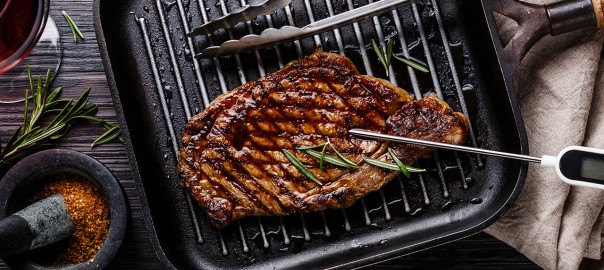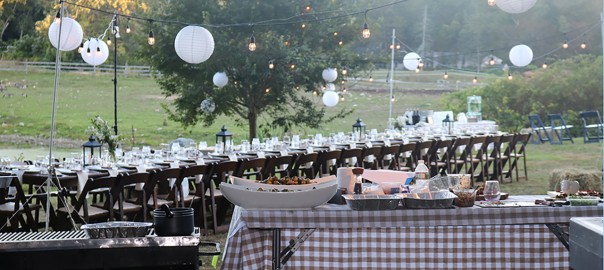Craving a steak night dinner, but can’t fire up the grill? No problem.
Grilling is our preferred method to prepare a steak. Browse through the Cut Library within BB Kitchen, and you’ll notice grill written more than any other cooking method. But what if grilling isn’t an option?
While summertime grilling on the deck may be one of our favorite pastimes, sometimes it’s just not feasible. Perhaps you live in an apartment without access to a grill. Maybe you don’t even own a grill — or the grill you do own is buried under three feet of snow.
While we’re partial to a perfectly grilled, medium-rare grass-fed steak with flawless sear marks, it’s not the only way you can prepare it. You can cook a juicy, flavorful steak right in your oven.
Selecting the right steak to cook
Cooking the perfect steak starts with selecting a quality cut. To purchase a good steak, consult with a farmer you trust, shop at a credible butcher or grocer, or order online to have your steak delivered right to your door.
Selecting high-quality steaks certainly has a number of health and ethical benefits, but you’ll also prefer the premium taste. Choose organic or grass-fed meat whenever possible. The organic label requires farmers raise their animals humanely and without growth hormones or antibiotics. Grass-fed meat ensures the animal grazed on grass during its lifetime, rather than feed made with corn or soy.
Pro tip: If you enjoy cooking steaks at home, consider purchasing an entire roast and slicing them into steaks yourself. A ribeye steak, for example, is nothing more than a ribeye roast cut into individual steaks. To save on cost without skimping on quality, consider purchasing an entire roast, slicing the steaks at home, then simply freeze what you cannot prepare in a single evening.
Which cut of steak works best in the oven?
Easy answer: All of them.
Any steak you enjoy on the grill can also be prepared in your oven. After all, does your favorite steakhouse come stocked with dozens of backyard grills? Of course not! They prepare premium, juicy steaks right from their kitchen. (Although some do have commercial indoor grills if they are lucky.)
You can make the same high-quality meat at home — you just need the right tools and a few tricks up your sleeve.
To prepare a steak in the oven, we recommend keeping the following on hand: A meat thermometer, aluminum foil, and a cast iron skillet. With those three items stocked in your kitchen, you should have all you need to follow any steak recipe you find online. Sprinkle a bit of sea salt and freshly ground black pepper, and you have yourself a steakhouse-worthy meal.
When cooking a steak in the oven, remember the following:
- A medium-rare steak typically reaches an internal temperature of 125°F. Remember, a steak will continue to cook even after you take it out of the oven, so it’s best to remove it from the heat source when it reaches 115°F.
- Do not try to rapid-defrost your steak. If you’re planning a steak night dinner for two, plan ahead and allow your steak to defrost slowly (beginning night before), bringing the steak to room temperature.
- Do not serve your steak immediately after removing it from the oven. Allow your steak to sit for six to ten minutes or more before serving so as not to lose its flavor.
How long to cook steak in the oven?
When preparing a steak in the oven, the cooking time depends on several factors: The cut, the thickness of the cut, and the cooking method used within the recipe. Below, we dive into three different ways to cook your steak at home, including broiling, searing at high-heat in a cast iron skillet then finishing in the oven, and the reverse-sear method — a favorite of our Head ButcherBox Chef Yankel Polak.
One final tip: Don’t take your eyes off of your dinner. Cooking a steak in the oven is no different than preparing a grilled steak over an open flame. It can easily become overcooked, so keep one eye on the timer and the other on your instant-read thermometer.
The reverse-sear method: How to prepare a ribeye
One of our members’ favorite steaks is the ribeye, which is a great cut to prepare in the oven. It’s juicy, flavorful, and pairs great roasted vegetables.
Lisa MarcAurele from Low Carb Yum uses the reverse-sear method to prepare her steak. First, she places her steak in the middle of the oven rack, preheated 275°F. After cooking it for 40-50 minutes, it reaches the desired medium-rare temperature. After allowing the steak to sit for 5-10 minutes, she sears it in a piping-hot pan drizzled with olive oil. To see Lisa’s full instructions and how she seasons her steak, check out the full recipe.
Searing a steak in cast iron: Preparing a sirloin steak
We love top sirloin for how versatile it is. This particular cut has the texture of steak but has a similar taste to that of a roast — allowing it to cook up nicely in the oven.
Linda Spiker at The Organic Kitchen prepares her sirloin steak by searing it first in a cast iron skillet (the opposite approach Low Carb Yum took with her ribeye). Once the steak browns on the stovetop, she moves the sirloin from the cast iron to an oven-safe baking dish.
A pan-seared steak only needs an additional five minutes in the oven to reach the perfect temperature. Plus, cooking steak this way allows you to reuse the cast iron skillet, browning any sauces or side dishes in the steak juices. Using this method, she pairs her steak with caramelized shallots and a white wine reduction, which you can check out here.
Broiling in the oven: Cooking a New York strip
Love a thick-cut New York Strip? The team at PaleoHacks broils their New York strip with a side of asparagus, creating an easy steak night dinner for two.
Broiling is one of the easiest methods to prepare a steak. Set your broiler to high, place your steak in an oven-safe dish in the center of the rack six inches from the heat source. Ten minutes under the broiler is all you need to achieve a medium-rare temperature. To read the full instructions, check out their recipe here.
While we focused on the ribeye, sirloin, and New York strip, any of the above methods are suitable for almost any cut of steak. If you’re craving filet mignon or a thick-cut T-bone, any of the above methods will work.
There are plenty of advantages to preparing a steak in the oven. The temperature is easily controlled, it’s not weather-dependent, and you don’t need any special equipment. Try one (or all) of the above recipes and let us know your favorite cooking method.




